new posts in all blogs
Viewing: Blog Posts Tagged with: Malaysia, Most Recent at Top [Help]
Results 1 - 19 of 19
How to use this Page
You are viewing the most recent posts tagged with the words: Malaysia in the JacketFlap blog reader. What is a tag? Think of a tag as a keyword or category label. Tags can both help you find posts on JacketFlap.com as well as provide an easy way for you to "remember" and classify posts for later recall. Try adding a tag yourself by clicking "Add a tag" below a post's header. Scroll down through the list of Recent Posts in the left column and click on a post title that sounds interesting. You can view all posts from a specific blog by clicking the Blog name in the right column, or you can click a 'More Posts from this Blog' link in any individual post.

By: Franca Driessen,
on 8/1/2016
Blog:
OUPblog
(
Login to Add to MyJacketFlap)
JacketFlap tags:
Books,
environment,
Malaysia,
biology,
logging,
rainforest,
*Featured,
Science & Medicine,
Earth & Life Sciences,
Borneo,
Jaboury Ghazoul,
conservation biology,
Dipterocarp Biology Ecology and Conservation,
dipterocarp forests,
Kota Kinabalu,
Lahad Datu,
Mount Kinabalu,
palm oil,
Sabah,
timber industry,
tropical forest,
Add a tag
We emerge from the thick tropical clouds that perpetually hang over Kota Kinabalu at this time of year. I crane my neck to get a good view through the plane window of the surreal profile of Mount Kinabalu, its multi-pronged rocky top standing well aloof of the surrounding clouds and forest. It seems as if the mountain, aware of its own splendour, has shaken off all vegetation from its peaks to better show off their plutonic immensity.
The post Changing tropical forest landscapes: A view from a small plane appeared first on OUPblog.
Helloooooo to all my fellow English teachers in Malaysia and Singapore. Please encourage your students to join the Scholastic Writers' Award 2014!
If you are in Malaysia, check out
this link. And if you are in Singapore, check out
this link. :o)
* promote the creation of Malaysian stories for children and teenagers,
* reward excellence of Malaysian content in fiction for children and teenagers,
* and support Malaysians writing for children and teenagers.
The Calistro Prize 2013 is now open for entries! To be eligible for the prize, stories should be original and unpublished works of at least 6,000 words, written in English, set in Malaysia, and Malaysian in content. Translations of original unpublished works are also welcome.
Only one entry per writer is allowed and the closing date for entries is September 30, 2013. The results will be announced on December 31, 2013.
The winning story will receive RM8,000 in cash, a medal, and a certificate. Two stories may win merit awards, each with a cash prize of RM1,000, a medal, and a certificate.
Click
here for all the rules and regulations of the Calistro Prize 2013!
 Rossiti Aishah Rashidi, illustrated by Farrah Ashiela Samsuri,
Rossiti Aishah Rashidi, illustrated by Farrah Ashiela Samsuri,
Puteri Tioman: The Green Turtle
RainTree (Malaysia), 2011.
Ages 5-11
Puteri Tioman is a turtle who is swimming back to Tioman Island off the eastern coast of Malaysia, where she was born some twenty-five years earlier, in order to lay her eggs. This superb picture book focuses on Puteri’s life from conception to her return to the island, as a route to understanding the life-cycle of the turtle and the principally man-made dangers to their survival.
Puteri’s individual story is reassuring for young readers. It not only allows author Rossiti Aishah Rashidi to present interesting facts such as the consistency of a turtle egg being “soft like leather but tough”, but it also counterbalances the hard-hitting environmental message, such as turtles getting trapped in abandoned fishing nets and drowning, or mistaking plastic bags for jellyfish, a main food source, so that they “die a slow death from choking”. The matter-of-fact tone is well-suited to the book’s young target audience, and by the time children have assimilated the dangers faced by turtles, it will come as no surprise, but will stimulate plenty of discussion, that the book ends with a question mark hovering over Puteri’s return to Tioman Island. “Will Tioman Island be safe for her to lay her eggs?” That discussion is then facilitated by three lists starting with “Did You Know?” facts about turtles and leading to “What Can You Do?” (beginning with the premise that “You do not have to go to the sea to help the turtle”) and “The 3Rs” – “Reduce Reuse Recycle”.
Complimenting Rashidi’s writing are Farrah Ashiela Samsuri’s gorgeously rich watercolour illustrations. As well as her life-like portrayal of the turtles themselves, from vulnerable hatchling to leathery adult, she convincingly conveys the contrast between clean and polluted seas. Indeed, the initial impact of Samsuri’s portrayal of the “deep blue sea” around Tioman Island grabs readers’ attention and provides an attractive visual gauge for the turtles’ story. The use of wavy text where the writing refers to turtles swimming is also effective.
Puteri Tioman has a strong local Malaysian context, making it very significant to children in Malaysia: but its environmental message is also relevant to children all over the world. Indeed part of the book’s power lies in its potential for helping children realise that their actions on a day-to-day local level wherever they are have an impact on environmental conservation on a global scale.
Marjorie Coughlan
June 2012
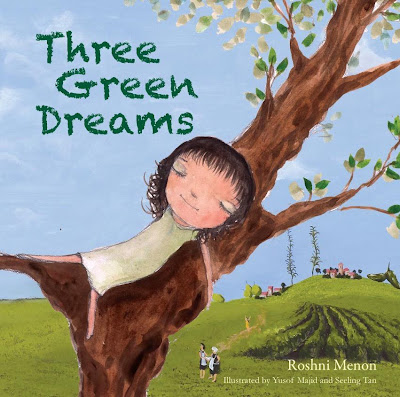
Three Green Dreams, written by Roshni Menon and illustrated by Yusof Majid and Seeling Tan (Small Print, 11 August 2012)
"A little girl goes on a glorious green journey full of sights familiar yet unusual, curious yet fun. Where will she go? Who will she meet? It's a green adventure not to be missed, so, step inside . . . and join her green dreams . . ."
Looking forward to this "all Malaysian" picture book!
["Waiting On Wednesday" is a weekly event hosted at Breaking the Spine that spotlights upcoming releases book bloggers are eagerly anticipating.]
I saw this on the Facebook page of the Malaysian chapter of the Society of Children's Book Writers & Illustrators:
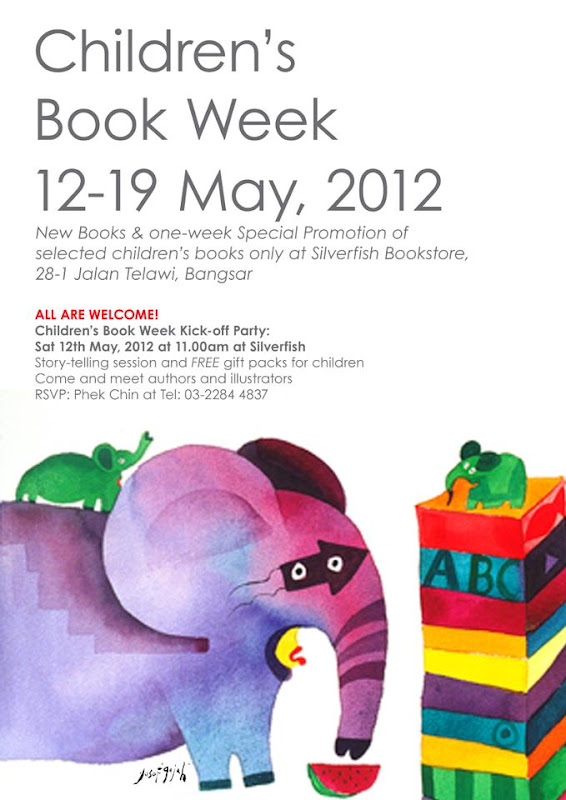
Along with this announcement:
Children's Book Week 12-19th May 2012 at Silverfish. We are celebrating Children's Book Week at Silverfish this May with new books and a one-week only special promotion. And to kick off Children's Book Week, we will be having a party on Sat 12th May at 11am. Come and meet authors and illustrators from Malaysia and elsewhere. Story telling session and free gift packs for children at the party! All are welcome. Please RSVP Phek Chin at Tel: 03-2284 4837
The Children's Book Week is jointly organised by the Society of Children's Book Writers and Illustrators (SCBWI) Malaysia and the Yusof Gajah Lingard Literary Agency.
Looks like it's gonna be a lot of fun! If you're in Malaysia, you should go!
Another highlight for me at the recent Bologna Children’s Book Fair was the Malaysia booth. Norhayati Razali, Assistant Director of the National Book Council of Malaysia, was responsible for the set up and organization of the Malaysian stand and she did a fabulous job! 12 Malaysian publishers and organizations were represented and the contingent of approx. 40 Malaysians at this year’s fair was the biggest group ever. Malaysia is well-known for her friendly people and that definitely held true for all those working at the Malaysian booth! Such a welcoming group of people and everyone eager to talk about Malaysian children’s literature. Malaysia has lots to celebrate in the world of kidlit including the fact that the current President of the International Board on Books for Young People (IBBY), Mr. Ahmad Redza Ahmad Khairuddib, is Malaysian!
A portion of the Malaysian Booth at the 2012 Bologna Children’s Book Fair

Launch of the Best Malaysian Children’s Books and the Teachers’ Gallery (Info can be found at www.bestmalaysianbooks-stories.com)



IBBY President Ahmad Redza Ahmad Khairuddib (standing on right) talks about the promotion of Malaysian and South East Asian children’s literature to the rest of the world.

Malaysia host a forum with China exhibitors and Mr. Mingzhou Zhang, Vice President of the Chinese Board on Books for Young People (Chinese Section of IBBY).

It was our lucky day! After the book launch for Yusof Gagah’s latest book Sang Montel both Marjorie and I won beautiful scarves hand-made by Yusof’s wife Zakiah Moha Isa. Not only is Zakiah a very talented storyteller she is also an amazing batik artist and instructor who converts Yusof’s amazing elephant images onto bags, scarves, and other apparel.



Linda Tan Lingard is the managing partner of Yusof Gajah Lingard Literary Agency based in Kuala Lumpur and also
0 Comments on The Malaysian Booth at the 2012 Bologna Children’s Book Fair as of 1/1/1900
Head on over to the Spirit of PaperTigers site to see feedback from the Harvest Centre in Sentul, Kuala Lumpur, Malaysia, including lots of great photographs.


By:
Aline Pereira,
on 6/23/2011
Blog:
PaperTigers
(
Login to Add to MyJacketFlap)
JacketFlap tags:
India,
Malaysia,
Eventful World,
Vietnam,
Vietnam folktales,
Linda Tan Lingard,
Asian Festival of Children's Content,
Cultures and Countries,
Asian Festival of Children's Content 2011,
children's literature Vietnamese,
Le Phuong Lien,
Sayoni Basu,
Vietnamese Writer's Association,
Add a tag
 Last month I was fortunate to attend the Asian Festival of Children’s Content (AFCC) in Singapore. Each day of the Festival was jam-packed with activities and it was truly an incredible experience to be surrounded by people from all over the globe who shared such a passion for children’s literature. You can read my previous posts about the Festival by clicking here and if you click here on the Gathering Books blog Dr. Myra Garces-Bacsal has compiled a list of links to blog posts about the AFCC.
Last month I was fortunate to attend the Asian Festival of Children’s Content (AFCC) in Singapore. Each day of the Festival was jam-packed with activities and it was truly an incredible experience to be surrounded by people from all over the globe who shared such a passion for children’s literature. You can read my previous posts about the Festival by clicking here and if you click here on the Gathering Books blog Dr. Myra Garces-Bacsal has compiled a list of links to blog posts about the AFCC.
One presentation that I haven’t blogged about yet but want to share with you was entitled “The Asian Children’s Publishing Symposium Parallel: Asian Markets and Experiences”. I almost missed this session as I lost track of time while perusing and purchasing books in the Media Mart but thank goodness I arrived in time to get a seat as this presentation was a highligh t for me. The three panelists: Le Phuong Lien, Head of Children’s Literature at the Vietnamese Writer’s Association; Sayoni Basu, Publishing Director at Scholastic India; and Linda Tan Lingard, Managing Partner of Yusof Gagah Lingard Literary Agency Malaysia, each gave an overview of the history and current state of children’s publishing in their respective countries. Each of these ladies is definitely an expert in their field and I certainly learned a lot. Children’s literature published in Vietnam is a subject I have been eager to learn more about but have had difficulty finding information on so it was a great pleasure in particular to listen to Mrs. Le Phuong accompanied by her lovely daughter who acted as a translator.
t for me. The three panelists: Le Phuong Lien, Head of Children’s Literature at the Vietnamese Writer’s Association; Sayoni Basu, Publishing Director at Scholastic India; and Linda Tan Lingard, Managing Partner of Yusof Gagah Lingard Literary Agency Malaysia, each gave an overview of the history and current state of children’s publishing in their respective countries. Each of these ladies is definitely an expert in their field and I certainly learned a lot. Children’s literature published in Vietnam is a subject I have been eager to learn more about but have had difficulty finding information on so it was a great pleasure in particular to listen to Mrs. Le Phuong accompanied by her lovely daughter who acted as a translator.
 Mrs. Le Phuong discussed three pieces of literature for Vietnamese children, from three different time eras, that highlighted the efforts of “the Vietnamese writer in the expression of Vietnamese culture for children”. She noted that “the trend of searching, realizing and praising the original beauty with strong local characteristics is now being emphasized more and more in the writing for children in Vietnam”. She also shared her thoughts on the impact of global development and harmonization with respect to Vietnamese children’s literature and also why conferences such as the AFCC are important. You can downloaded Mrs. Le Phuong’s presentation here and view her power point slides
0 Comments on The Asian Children’s Publishing Symposium Parallel: Asian Markets and Experiences ~ Day 2 at the AFCC as of 1/1/1900
Mrs. Le Phuong discussed three pieces of literature for Vietnamese children, from three different time eras, that highlighted the efforts of “the Vietnamese writer in the expression of Vietnamese culture for children”. She noted that “the trend of searching, realizing and praising the original beauty with strong local characteristics is now being emphasized more and more in the writing for children in Vietnam”. She also shared her thoughts on the impact of global development and harmonization with respect to Vietnamese children’s literature and also why conferences such as the AFCC are important. You can downloaded Mrs. Le Phuong’s presentation here and view her power point slides
0 Comments on The Asian Children’s Publishing Symposium Parallel: Asian Markets and Experiences ~ Day 2 at the AFCC as of 1/1/1900

By:
Aline Pereira,
on 6/17/2011
Blog:
PaperTigers
(
Login to Add to MyJacketFlap)
JacketFlap tags:
Eventful World,
Cultures and Countries,
Daphne Lee,
Malaysian authors,
Malaysian children's book publisher,
Malaysian children's literature,
Asian Festival of Children's Content,
Asian Festival of Children's Content 2011,
One Red Flower Press,
Malaysian Folktales,
Malaysian Tales: Retold and Remixed,
Preeta Samarasan,
The Places You Will Go,
Malaysia,
Singapore,
Add a tag
 Malaysian Tales: Retold and Remixed
Malaysian Tales: Retold and Remixed
edited by Daphne Lee
Book launch by Zi Publications
Sun 19 Jun, 2011, 2pm – 5pm
KL Alternative Bookfest, The Annexe Gallery, Central Market, Kuala Lumpur, Malaysia
Free Admission
This stunning new collection features 16 classic tales as reimagined and retold by some of Malaysia’s brightest raconteurs. Preeta Samarasan, Kee Thuan Chye, Amir Muhammad, and other Malaysian writers spin new tales from old favourites like Si Tanggang, Singapura Dilanggar Todak, Raja Bersiong, Batu Berbelah, Batu Bertangkup, and the legends of Hang Li Poh, Admiral Cheng Ho, Puteri Gunung Ledang and Mahsuri.
The collection was edited by Daphne Lee who, after corresponding with for several years, I was thrilled to finally meet in person at the 2011 Asian Festival of Children’s Content in Singapore. Daphne is a writer (she has published six picture books, as well as short stories in magazines and anthologies) and publishing editor of OneRedFlower Press, which specialises in Malaysian picture books. She also writes a weekly column about children’s and young adult books for Malaysian Daily and The Star (click here to read her article on my AFCC presentation), and runs reading initiatives for a Malaysian non-profit organisation. On her blog The Places You Will Go she shared her thoughts on how Malaysian Tales: Retold and Remixed came about:
When I first thought of collecting stories for this anthology, I imagined it would be for children. I didn’t grow up with Malaysian fairytales, myths and legends. Like many Malaysian children from English-speaking families, I was raised on the stories of Hans Christian Andersen and the Brothers Grimm. I was baptised in the Catholic church and so Christian mythology was part of my life.
As an adult I felt something was missing. Why did I know European fairytales, myths and legends and not the fairytales, myths and legends of the country in which I lived and belonged? The obvious reason was because my parents never told me any of the latter. My mother would occasionally relate bizarre stories, of Chinese origin, about a filial son who went to incredible lengths to prove his love for his aged mother, but for most part she (and my sisters) read me stories which included fairytale staples like Snow White, Cinderella, The Goose Girl, The Bremen Town Musicians (my favourite) and Rumplestiltskin.
We had a few lovely hardbound copies of fairytales by Andersen and the Grimms. We did not own any collections of Malaysian traditional tales. This was why I thought of compiling one. However, this was several years ago and since then a few anthologies, including two fully-illustrated ones, have been published for children.
By the way, I think it’s worth mentioning that fairytales, myths and legends are not just for children. Collectively, these types of stories are often called folktales, a term that, in the strictest sense, refers to their original oral form, when they were shared with largely illiterate communities by amateur and professional storytellers. There was no idiot box to entertain then and, instead, common folk relied on travelling storytellers, or pengli

By:
Aline Pereira,
on 4/25/2011
Blog:
PaperTigers
(
Login to Add to MyJacketFlap)
JacketFlap tags:
Malaysia,
Eventful World,
Daphne Lee,
Linda Tan Lingard,
Malaysian children's literature,
Malaysian illustrators,
SCBWI Malaysia,
Yusof Gajah,
Cultures and Countries,
Malaysian Picture Book Week,
One Red Flower Press,
Add a tag
 Silverfish Books (58-1 Jalan Telawi, Bangsar, Malaysia) is having a Picture Book Week with Malaysian Illustrators from May 2 – 7 2011. New titles will be on display, illustrators will be in attendance and special guests (including Daphne Lee of One Red Flower Press) will be giving talks on
Silverfish Books (58-1 Jalan Telawi, Bangsar, Malaysia) is having a Picture Book Week with Malaysian Illustrators from May 2 – 7 2011. New titles will be on display, illustrators will be in attendance and special guests (including Daphne Lee of One Red Flower Press) will be giving talks on  how and why picture books are made. On May 7 esteemed illustrator Yusof Gajah will be hosting an Art & Creativity Workshop with children ages 12 and under. You must preregister your children for this event and can do so by contacting Silverfish Books before April 30th. Many of the illustrators taking part are members of SCBWI Malaysia so be sure to check SCBWI Malaysia’s Facebook page for photos and updates from the event!
how and why picture books are made. On May 7 esteemed illustrator Yusof Gajah will be hosting an Art & Creativity Workshop with children ages 12 and under. You must preregister your children for this event and can do so by contacting Silverfish Books before April 30th. Many of the illustrators taking part are members of SCBWI Malaysia so be sure to check SCBWI Malaysia’s Facebook page for photos and updates from the event!

By:
Aline Pereira,
on 9/9/2010
Blog:
PaperTigers
(
Login to Add to MyJacketFlap)
JacketFlap tags:
Malaysia,
Eventful World,
Noma Concours,
Daphne Lee,
Malaysian illustrators,
Yusof Gajah,
childrens illustrators exhibit,
Awang Fadillah,
Badolhisham Mohamad Tahir,
Galeri Petronas,
Jainal Amimbing,
OneRedFlower Press,
Words+Pictures=Book,
Add a tag
 Words+Pictures=Book, an exhibition of 30 original illustrations by 10 distinguished Malaysian illustrators, is currently ongoing until 3rd October at Galeri Petrononas in Kuala Lumpur, Malaysia. Daphne Lee, respected Malaysian children’s book author and publishing editor of OneRedFlower Press, reviewed the exhibit in her weekly StarMag column. Here’s a part of what she says about it:
Words+Pictures=Book, an exhibition of 30 original illustrations by 10 distinguished Malaysian illustrators, is currently ongoing until 3rd October at Galeri Petrononas in Kuala Lumpur, Malaysia. Daphne Lee, respected Malaysian children’s book author and publishing editor of OneRedFlower Press, reviewed the exhibit in her weekly StarMag column. Here’s a part of what she says about it:
The exhibition was Badolhisham Mohamad Tahir’s, head of exhibitions at Galeri Petronas, idea. It was his past experience as an illustrator for The Institute of Language and Literature that led him to consider the possibility of a picture book exhibition. “I felt it was time for picture books to be highlighted as a valid art form and I wanted especially to show contemporary Malaysian illustration,” said Badrolhisham.
His initial idea was to showcase award-winning Malaysian illustrators. A little known fact is that six Malaysian picture book illustrators have won prizes at the Noma Concours for Picture Book Illustrations. Three of these receipients:Yusof Gajah, Jainal Amimbing and Awang Fadillah, are part of the exhibition.
What makes this exhibition particularly noteworthy, however, is that it doesn’t showcase art from existing picture books: instead, the participating illustrators were given just five days to create a picture book from scratch. Words+Pictures=Book has been quite a success, attracting up to 300 visitors a day. Although Daphne has some reservations about the way the illustrations are displayed, she concludes that:
While I feel Words+Pictures=Book fails to convey the complexities of picture book art creation, it at least serves to bring the art form to the attention of the Malaysian public and also to highlight the important role of visual art in children’s literature.
…And that can only be a good thing. If you go to the exhibition, do let us know your highlights.

By: Rebecca,
on 5/19/2009
Blog:
OUPblog
(
Login to Add to MyJacketFlap)
JacketFlap tags:
History,
china,
Oxford,
India,
Malaysia,
A-Featured,
Singapore,
Vietnam,
World History,
Asia,
Indonesia,
Thailand,
Southeast Asia,
Angkor,
Craig A. Lockard,
Add a tag
Craig A. Lockard is Ben and Joyce Rosenberg Professor of History at the University of Wisconsin-Green Bay. In his new book, Southeast Asia in World History, he looks at  Southeast Asia from ancient times to the present, paying particular attention to the region’s role in world history and the distinctive societies that arose in lands shaped by green fields and forests, blue rivers and seas. To read more excerpts from books in the New Oxford World History series click here.
Southeast Asia from ancient times to the present, paying particular attention to the region’s role in world history and the distinctive societies that arose in lands shaped by green fields and forests, blue rivers and seas. To read more excerpts from books in the New Oxford World History series click here.
The largest and most powerful Golden Age state was the Khmer kingdom of Angkor in Cambodia, established by King Jayavarman II in 802. The name Angkor derives from the Sanskrit term for “holy city,” and Jayavarman considered himself a reincarnation of Shiva, the Hindu god of destruction and fertility. Jayavarman himself had lived many years at a Hindu court in Java before returning to Cambodia, indicating the widespread contacts among Southeast Asian states. His successors consolidated the kingdom and conquered Dvaravati, a heavily Indianized and largely Buddhist Monk state in central Thailand. One of the greatest Angkor kings, Jayavarman VII (who ruled from 1181 to 1219) was a devout Buddhist who boasted of his compassion for his people. He expanded the empire, commissioned important artworks, built roads and sturdy stone walls, and sponsored the construction of monuments and temples. His main legacy was the Bayon temple, which featured towers with large carved faces, probably of the egocentric king himself.
Angkor’s kings bragged about their achievements, and royal engravers gushed as they described on a monument King Yasovarman I in the late ninth century: “In all the sciences and in all the sports, in dancing, singing, and all the rest, he was as clever as if he had been the first inventor of them.” Angkor flourished for half a millennium. At its height in the twelfth and thirteenth centuries, the kingdom was a loosely integrated empire controlling much of present-day Cambodia, Laos, Thailand, and Southern Vietnam. Angkor carried on an active trade with China, with many resident Chinese merchants. Zhou Daguan, a Chinese ambassador in Angkor in 1296, left vivid descriptions of the society and its leaders. In a report back home, he outlined the system of justice presided over by the king: “Disputes of the people, however insignificant, always go to the King. Each day the king holds two audiences for affairs of state. Those of the functionaries or the people who wish to see the king, sit on the ground to wait for him.”
Zhou Daguan also observed a spectacular royal procession of the Angkor king, Indravarman, in 1296:
When the king goes out, troops are at the head of the escort; then come flags, banners and music. Palace women, numbering from three to five hundred, wearing flowered cloth, with flowers in their hair, hold candles in their hands, and form a troupe…Then come other palace women, carrying lances and shields, the king’s private guards, and carts drawn by goats and horses, all in gold, come next. Ministers and princes are mounted on elephants, and in front of them one can see, from afar, their innumerable red umbrellas. After them come the wives and concubines of the king, in palanquins, carriages, on horseback and on elephants. They have more than one hundred parasols, flecked with gold. Behind them comes the sovereign, standing on an elephant, holding his sacred sword in his hand. The elephant’s tusks are encased in gold.
The well-financed Angkor government supported substantial public services including hospitals, schools, and libraries…Some kings were noted as avid patrons of knowledge and the arts. One wrote that having drunk the nectar of knowledge, the king gives it to others to drink. Theater, art, and dance reflected Hindu values and stories…By the twelfth century the bustling capital city, Angkor Thom, and its immediate environs had perhaps as many as 1 million people, much larger than any medieval European city but comparable to all but the largest Chinese and Arab cities of that era. This was clearly one of the major urban complexes in the preindustrial world. The magnificent temples still standing today and a remarkable water-control network testify to prosperity and organization.
Many stone temple mountains were built by thousands of conscripted workers as sanctuaries and mausoleums, designed to represent the Hindu conception of the cosmos. At their center was a replica of Mt. Meru, where Hindus believe that the gods dwell…The temple complex Angkor Wat was the largest religious complex in the premodern world, built by some 70,000 workers in the twelfth century, and surrounded by a four-mile-long moat, dwarfing the magnificent European cathedrals and grand mosques of Baghdad or Cairo. The reliefs carved into stone at Angkor Wat and other temples provided glimpses of daily life, showing fishing boats, midwives attending a childbirth, festival jugglers and dancers, the crowd at a cockfight, men playing chess, peasants bringing goods to market, and merchant stalls According to Zhou, women operated most of these retail stalls: “In this country it is the women who are concerned with commerce.” Khmer society in this era was matrilineal, and women played a much more important role in the family, society, and politics than in most other places in the world. Women went out in public as they like, and Chinese visitors were shocked at their liberated behavior.
Some royal women at Angkor were noted for intellectual activities or service to others. Jayarajadevi, the first wife of King Jayavarman VII, took in hundreds of abandoned girls, training and settling them. After her death the king married Indradevi, a renowned scholar who lectured at a Buddhist monastery and who was acclaimed in a temple inscription as “naturally intelligent…very pure…the chief teacher of the king.” Women dominated the palace staff, and some were even gladiators and warriors. Women were also active in the arts, especially as poets…
In addition to building temples, drafted workers also constructed an extensive hydraulic network of canals and reservoirs for efficient water distribution, demonstrating some of the most advanced civil engineering in the premodern world. With the help of plows pulled by oxen or water buffalo, Khmer farmers brought a moderately fertile region into astonishing productivity…Although some scholars are skeptical, according to Chinese visitors, the Khmers may have had the most productive agriculture in history, producing three to four harvests a year, wheras elsewhere in the world only one or two was normal. Only a few premodern peoples, such as the Chinese and Balinese, could even come close to matching Khmer farming capabilities…

On Friday I posted about reading at the Francelia Butler Conference at Hollins University. It was the first time I shared my poem publicly. I know, I know, I post poems here all the time. BUT there is a net of safety there. I don't have to see your faces when you read my poetry. I don't hear your comments like "She thinks she's a POET?!" And of course, I share my poetry with all of my fourth graders all of the time. But once again, there is a net of safety there. They think everything I write is wonderful, which is probably why I've continued to write poetry all of this time.
This summer I have been writing poems, not just for me, but I got brave enough to share with other people. I grew up overseas and the collection of poems I'm working on is based on some of my experiences trying to fit in and be comfortable in multiple cultures, yet still be who I am. The poems are set in Salem, Virginia, ChiangMai, Thailand, and Penang, Malaysia--three places I have spent significant time.
A few weeks ago I submitted some of these poems for consideration in the Francelia Butler Conference. My poems were chosen, which meant that I would be one of seven people with creative submissions to read aloud at the conference. Seven critical papers were chosen also.
I was a bundle of nerves because I knew there were poets in the audience, and I wondered if they would know I didn't know what I was doing.
This year's theme was a Dr. Seuss theme, because Philip Nel, author of The Annotated Cat:Under the Hats of Seuss and His Cats and Dr. Suess: American Icon, was the keynote speaker. Fellow students performed a Suessical Musical between readings, and it kept the day lively and fun. There was a silent auction, in which I won three things: a picture from The Tale of Despereaux, a lovely photograph of a clemetis donated by Sharon Dennis Wyeth, and a book of poetry by Billy Collins.
There is always a winner for each category: creative, critical, and art. After listening to the amazing stories crafted by my six other fellow readers, I knew I didn't stand a chance of winning. That's what's so amazing about Hollins--being in the company of so many good writers that you admire. I am always very impressed at how much good writing is produced in such a small group.
But when the winners were announced, they called my name! Yes, I won the Shirley Henn Award for Creative Scholarship. Wow! I was humbled and surprised!
Even if I hadn't won, this reading gave me a chance to share my work publicly. Several people came up to me during the break and shared how much they liked it. Two people introduced themselves: one is from Taiwan, and one lived in Malaysia, and both said they related to my poems. What a huge compliment. That's what I was hoping for. Other people were kind enough to just give me words of encouragement. Thank you! Thank you!
Hollins students are the ones who actually narrow down all of the submissions to a list of finalists. Then other writers actually judge the finalists. When I read the list of judges, I was so excited. The judges were: Bruce Coville, Steve Jenkins, Kerry Madden, Claudia Mills, and Janet Wong. I'm fans of all of their work, and it was an honor just to have them take the time to read something I had written.
The Memoir Monday prompt was to write about something that you did that you didn't think was possible. Believe it or not, this was it. I really never imagined I would share my poetry with anyone but my students. Now, thanks to a lot of encouragement from my friends at Hollins, I have the courage to share it with others.
The song of the day is  Senses Working Overtime by XTC. No real reason, it's just in my head.
Senses Working Overtime by XTC. No real reason, it's just in my head.
Free Rice gives away 5 grains of rice to starving people for every vocabulary word you get right. Probably not the best way to feed the world, but it sure is fun.
Kampung Boy by Lat
Lat is one of the best known and loved cartoonists in Asia. He's won all the top awards in Malaysia and this is his classic, originally published in 1979, but finally available in English for our reading pleasure.
And pleasure it is.
This story starts with Mat's birth, in a small village in Malaysia. We follow him as he makes friends, goes to the Islamic school, fishes, and rides his bike into town to buy supplies with his dad.
There's no internal conflict or overreaching story arc besides life in general. A bit episodic and verging on nostalgic, it's a wonderful pick for kids and adults alike.
A funny look at childhood, it's Lat's drawings that make this story so phenomenal. His figures are simple, but their facial expressions are priceless, as are all of the teeth and tongues.
The circumcision scene is my favorite.
Town Boy by Lat
This is the most welcome sequel and follows Mat from the
kampung to
Ipoh, where his entire family moves after selling off their land to the tin company. Here, Matt grows up and we follow him through middle and high school. He makes new friends, goes on dates, and starts seriously studying art.
A must-have for those who enjoyed
Kampung Boy, one only hope that a third is on its way, as the ending is even more bittersweet than that of the its predecessor.
Full disclosure:
Town Boy was provided by the publisher at ALA after I did a little squeal when seeing it.
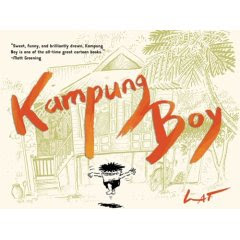 Kampung Boy
Kampung Boy
by Lat
First Second, New York, 2006
ISBN: 978-1-59643-121-8
I would not consider my self a voracious reader of graphic novels, but when I hear about one that strikes my interest, I can't resist. Two graphic novels have recently come across my radar screen as ones needing to be read by me because of my connection to them. 1) Kampung Boy 2) American Born Chinese (which I reviewed briefly here).
I picked up both of these because I grew up overseas. I went to boarding school in Malaysia (the setting for Kampung Boy), and I remember what is was like to feel like an outsider in America (premise of American Born Chinese).
I found Kampung Boy easy to read because of it's larger pictures and paragraphs of text chunked together. Sometimes I think graphic novels can get so busy on the page. This one was not.
I love the details about village life--both the true and the funny. Lat, the author/illustrator, really brings the culture of his home village to reluctant readers. While I really love some of the novels and poetry written about Asia and growing up overseas, male students in my classroom may not be inclined to read them. A copy of Kampung Boy, however, would be well read.

Just pull out one of my old artwork from my archive drawer! I dont think i can do this again today! It took me about 1 week to render it. This is one of my favourite artwork done back to 2002-2003 i think. A caricature of hi profile person in Malaysia. Cant name it coz the pix will do! :) mechanical pencil 0.5 2B nib on A4 70mg paper.
sudin - studio69
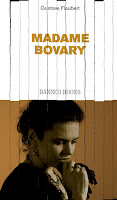
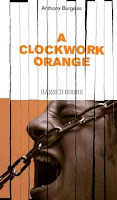

Ted Mahsun, of "Manuscripts Don't Burn", Malaysia posts an entry about the UK Independent releasing a series of books that have been banned or challenged. They have great cover art and are also identified on the cover as being banned. They offered special editions to their print readers each week. UK readers can check this week's banned book here.
Banned Books is an exclusive collection of 25 cutting-edge titles, censored classics and literary landmarks by authors including Ernest Hemingway, Vladimir Nabokov, Franz Kafka, Andre Gide, Maya Angelou, William Burroughs, Kurt Vonnegut, Henry Miller and Ray Bradbury, specially published and packaged for Independent readers.
Join the Pelham Public Library in taking the
"Banned Book Challenge." Our Malaysian and Cuban friends would ask you to consider reading a book that is
banned in Malaysia or being
burned in Cuba.





 Rossiti Aishah Rashidi, illustrated by Farrah Ashiela Samsuri,
Rossiti Aishah Rashidi, illustrated by Farrah Ashiela Samsuri,



























 Senses Working Overtime
Senses Working Overtime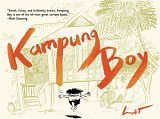
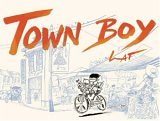





The particular electronic cigarette ego basic starter kit is fantastic for new users.
Remove other nearby wireless devices, such as a cordless or
cellular telephone and make sure the mouse is at least eight inches away from
a wireless keyboard. Mobile computing is continuously getting
better with best performance, smarter processors,
light weight and handy designs, but as we all know, the main power
of the mobile computing device (weather it is laptop,
mobile, PDA or e-book reader) resides in it's battery capacity.
My web blog www.carp2.com